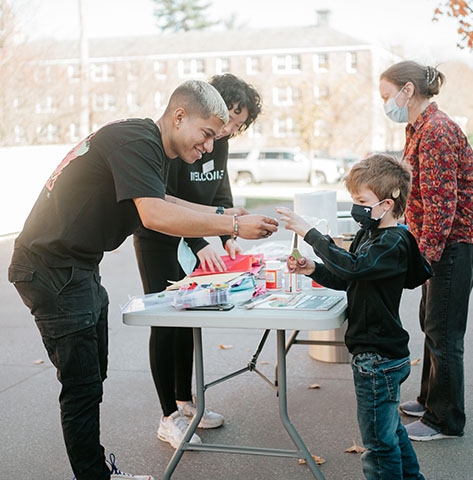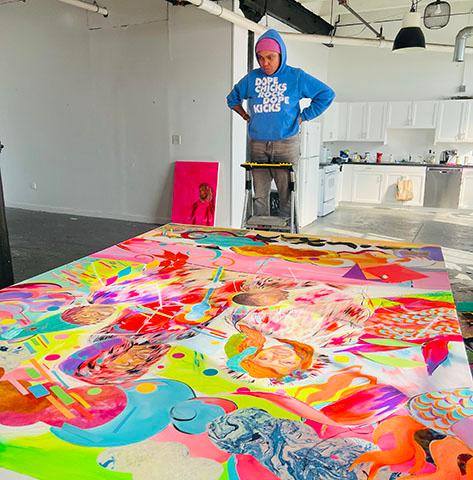© Janelle Rodriguez

Students in Professor Nhora Serrano’s Visual Narrative: Images With(in) Books, Art History and Literature class recently had the chance to converse with Yun-Fei Ji about his current exhibition at the Wellin Museum, Yun-Fei Ji: The Intimate Universe. Students submitted questions in advance to Serrano, and she directed the conversation between Ji and the class.
The conversation began with a question from Pippa Schwarzkopf ’16. “Did you draw on legends or myths or other cultural stories when creating the fantastical creatures?” Ji replied that he was influenced by ghost stories told by his grandmother and residents of rural areas. The farmers talked about strange creatures that would appear suddenly as omens of bad fortune because droughts and blights happened to follow their appearances. Ji incorporated these stories because even thought they were dismissed as uneducated superstition, he believes them to be a fundamental part of the fabric of rural society threatened by urbanization.
Although the fantastic stories could lead viewers to think Yun-Fei’s narrative style is surrealist, he, surprisingly, does not consider his work to be surreal. This difference between the viewers’ interpretation of artworks and an artist's genuine intentions has been a topic of discussion in class lectures and on the class blog.
Ji’s interest in Chinese history is what inspired him to work with Chinese scrolls. The artist saw different scrolls that should be read from right to left, but for his own scrolls, Ji wrote his stories in a way that can be read from left to right and from right to left. The scrolls also emphasize the idea of Chinese heritage which is a central element to the narratives in Ji’s paintings.
Chinese symbols help Ji structure his paintings. For example, the position of pine trees symbolizes different meanings in Chinese tradition. A tree placed at the foot of the mountain would indicate a humble background, while one that has an exposed root would indicate that a person is not local and is likely to be a delegate from a foreign country.
Ji said he is influenced by films, literature (especially Russian), and materials he reads in newspapers and blogs.
Serrano concluded the class by asking Ji to provide advice to the upcoming artists. He answered that being immersed in a different cultural environment is an extraordinary way to view things in a different lens and expand one’s mind. For students from the United States, he recommended an intrinsic change from the western world to a drastically different cultural sphere like India or Africa. Ji stressed the danger of remaining in a comfort zone and the rewarding experience of adapting to challenging circumstances, especially for artists for whom such experiences may influence the way they express ideas.
The Visual Narratives class has been exploring storytelling in the western and eastern worlds with respect to religious beliefs. Ji’s The Intimate Universe belongs to the category of social critique, similar to Goya’s Los Caprichos. The class has allowed for hands-on projects like the creation of prints at the art studio with the help of Visiting Assistant Professor Andrew Rippeon and drawing illuminated letters in the style of medieval manuscripts. Ji's presentation offered additional insights into the power of visual communication.







